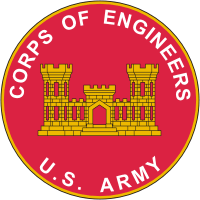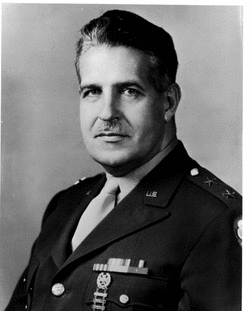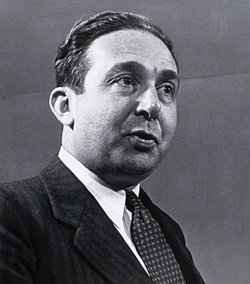The Manhattan Project
Ten days after the Einstein letter, or so it is commonly called, President Roosevelt called for the first meeting of the Advisory Committee on Uranium in Washington DC. Not even six months after this meeting, Otto Frisch and Rudolf Peierls, while living in the UK, experimented with fast fission of U-235, and discovered the first grounded estimate of the critical mass of U-235 that it would take to create a bomb. This discovery integrated even more ecstatic United States’ scientists, as the years between 1940 and 1941 brought in much more rapid and dedicated work toward creating the atomic bomb. It was not until later in 1942 that the people behind the nuclear research noticed that since this project was in fact a weapons project, then it should be headed by an organization that usually dealt with weapons; the answer to this problem was Col. James Marshall, who organized the Army Corps of Engineers District to take on the task of atomic bomb development.[i]
[i] "The Manhattan Project (and Before)." The Manhattan Project. N.p., 30 Mar 1999. Web. 13 May 2011. <http://nuclearweaponarchive.org/Usa/Med/Med.html>.
[i] "The Manhattan Project (and Before)." The Manhattan Project. N.p., 30 Mar 1999. Web. 13 May 2011. <http://nuclearweaponarchive.org/Usa/Med/Med.html>.
From this district, Marshall created another organization commonly known as the Manhattan Project, which was headed by the very strict and overbearing Col. Leslie Richard Groves. On September 18, Groves ordered the purchase of 1250 tons of high quality Belgian Congo uranium ore, as well as 52,000 acres of land for the Oak Ridge site, in Oak Ridge, Tennessee; the Manhattan Project had begun. Grove’s military background made him quite the “domineering boss,” especially once he was introduced to Oppenheimer; a physics professor at the University of Berkeley who showed a keen sense of leadership as a scientist in further branches of the Manhattan Project. The two made a deadly pair, and it was only after the war that people such as Szilard, who came to dislike Groves very much, realized that the hard discipline was necessary for the creation of the atomic bomb.[i]
[i] The Manhattan Project (and Before)
[i] The Manhattan Project (and Before)



